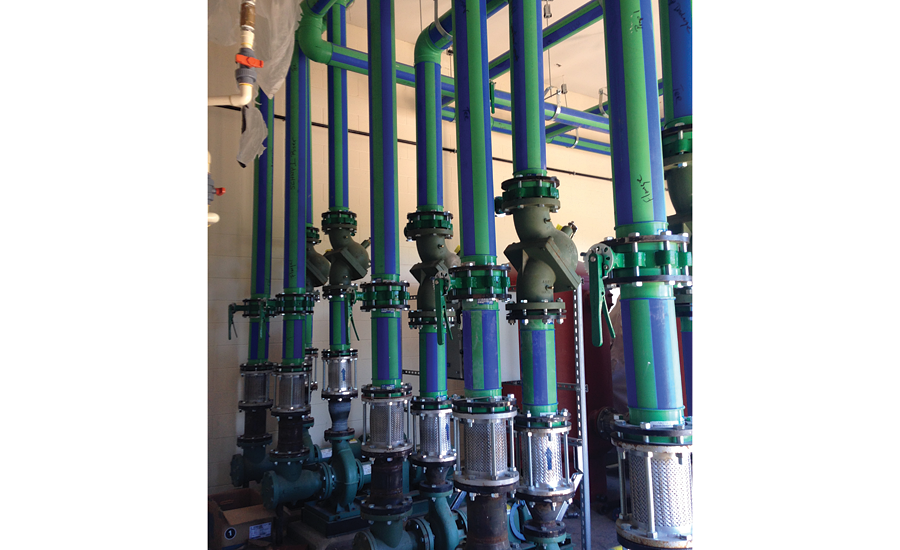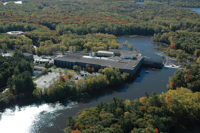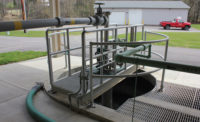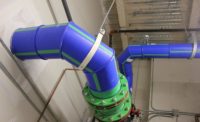When St. Johns County’s old health and human services building — previously the Flagler West Hospital — in St. Augustine, Fla., reached the end of its useful life, the county commission “could’ve put $4.5 million worth of Band-Aids on the building or we could’ve invested in a brand-new facility. We chose the latter,” St. Johns County Commissioner Rachael Bennett says.
Former St. Johns County Commissioner and now state Rep. Cyndi Stevenson called the 1960s structure “an energy hog,” while a staff report called it “functionally obsolete.” Even if brought up to code, the aged complex still would have needed major continual maintenance.
Instead, county commissioners cut the ribbon in February 2015 on the new relocated St. Johns County Health Center. The completed construction on the 75,000-sq.-ft. building cost about $12 million to build. The center houses at least five St. Johns County agencies: Mental Health Services, the Florida Department of Health, the Department of Children and Families, Veterans Services and the Family Integrity Program.
PP-R gets the call
Health and human services centers typically assist the most vulnerable community members, and one of the many problems with this old structure was its inefficient HVAC system. According to the U.S. Environmental Protection Agency, building materials can have a major impact on air quality and can markedly affect occupants, especially the most susceptible of the population, such as children and the elderly. Careful material selection along with proper operation and maintenance can help improve air quality.
Therefore, choosing proper building supplies for St. Johns County Health Center’s HVAC system was imperative, right down to the piping system.
Jacksonville, Fla.-based McVeigh & Mangum Engineering (MME) partnered with PQH Architects to provide the total engineering and architectural designs for the new facility, with MME producing the mechanical, plumbing, electrical and structural designs for the project.
The building’s HVAC system receives chilled water from two water-cooled chillers and two cooling towers. The chilled- and condenser-water systems originally were specified with steel and copper or polypropylene-random (PP-R) piping. Jacksonville-headquartered mechanical contractor AC General selected PP-R piping as an alternative material to steel because of its potential labor savings and natural insulation properties.
The PP-R piping system is fused via heat to form connections and bonds on both sides of a joint into a single, homogenous material without the use of chemicals, adhesives or mechanical connections, which eliminates systematic weaknesses and potential fail points in the pipe. The seamless heat-fusion connections, combined with the piping’s resistance to corrosion and abrasion, help to ease leakage concerns.
According to Jeff Mock, P.E., a senior mechanical engineer who was with MME during the St. Johns project, Aquatherm piping systems were included in the bid because the potential labor and insulation savings. Additionally, MME had good experiences using Aquatherm PP-R piping for chilled-water systems on previous projects.
“Aquatherm had published labor rates and estimating software [the Aquatherm Quick Check Estimator] that allowed us to calculate labor savings pre-installation,” AC Greneral Project Manager Marty Bryant said.
Lifespan and integrity also were key to the specification. The piping systems are repelling water from their surfaces, protecting the pipe walls from erosion and reducing leakage concerns. The smooth, chemically inert material prevents scaling and corrosion buildup so the piping systems’ performance never suffers, even without chemical treatment.
Corrosion resistance — both on the inside and outside of the pipe — was a driving factor for allowing PP-R use on the project, Bryant notes. The local water quality is extremely hard on steel and copper piping and the St. Johns County Public Health Department service personnel wanted chilled- and condenser-water systems that would be as resistant to the aggressive water as possible.
“The quality of water is concerning, so we needed a piping solution that was corrosion-resistant and fit in our budget,” Bryant concludes.
This article was originally titled “Cutting the ribbon” in the October 2016 print edition of PM Engineer.



